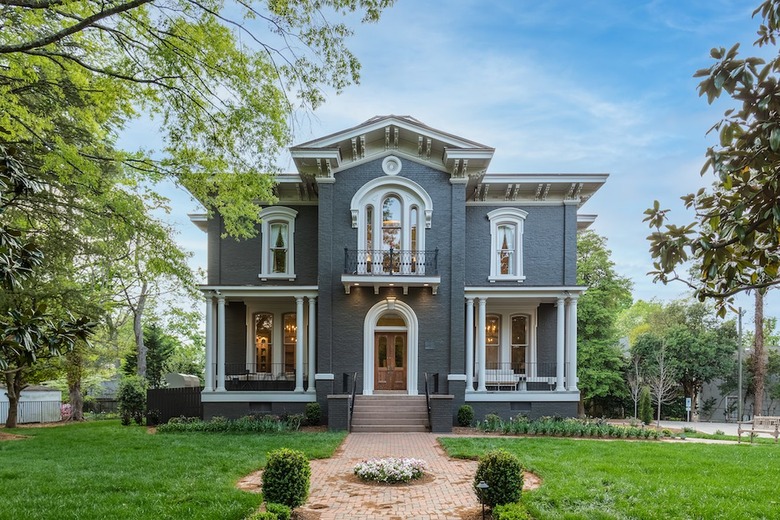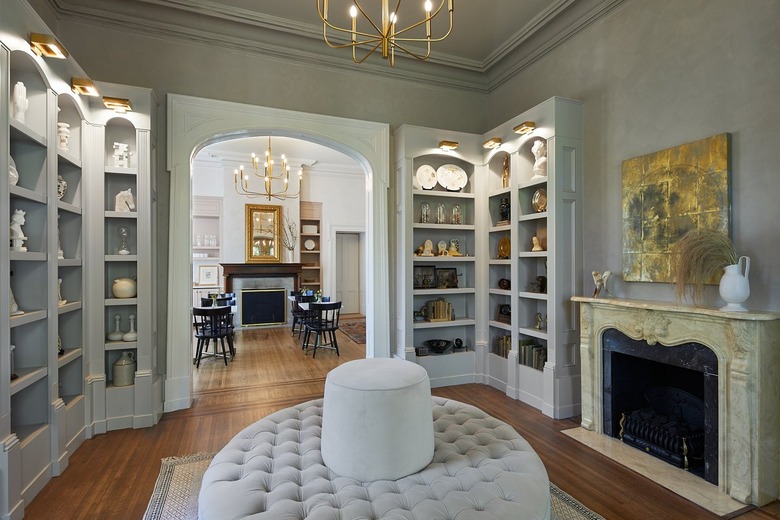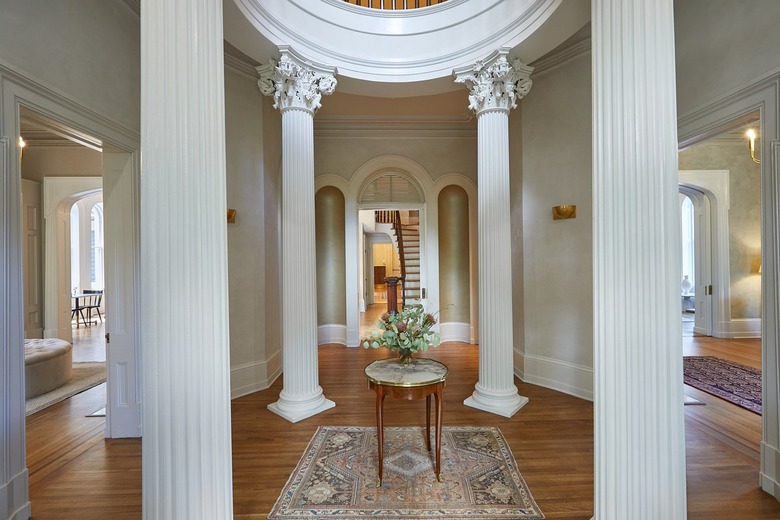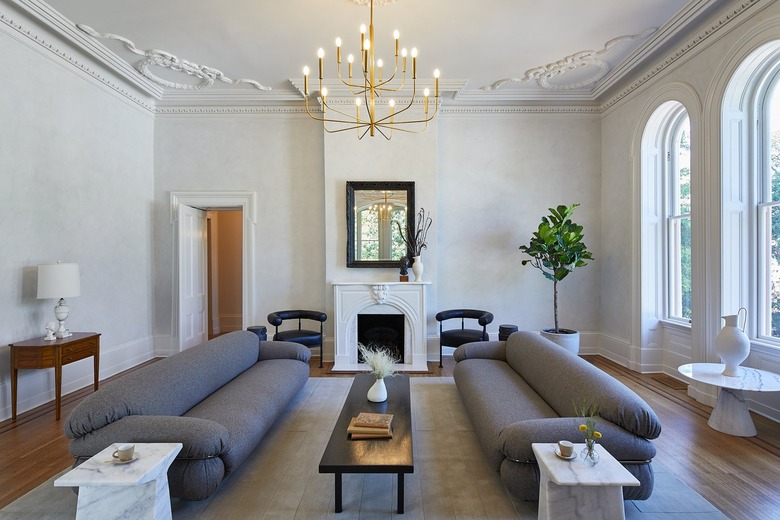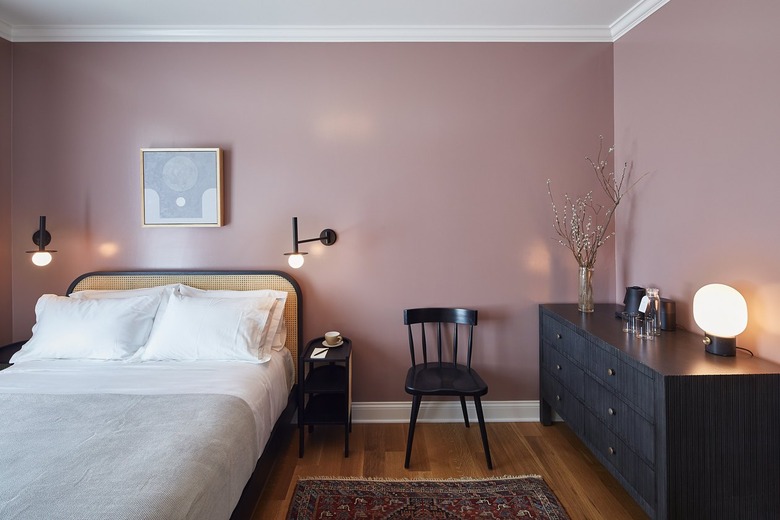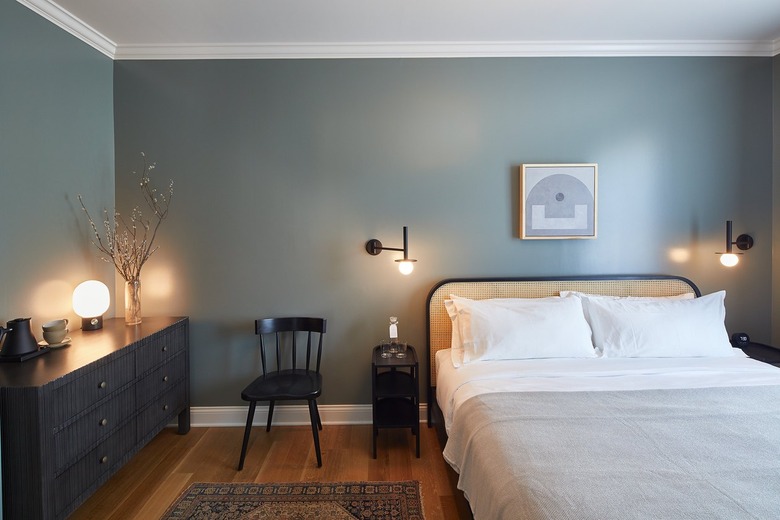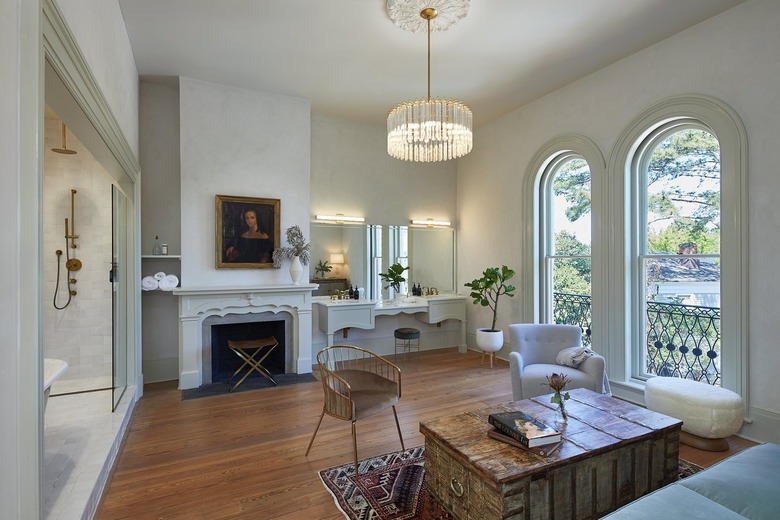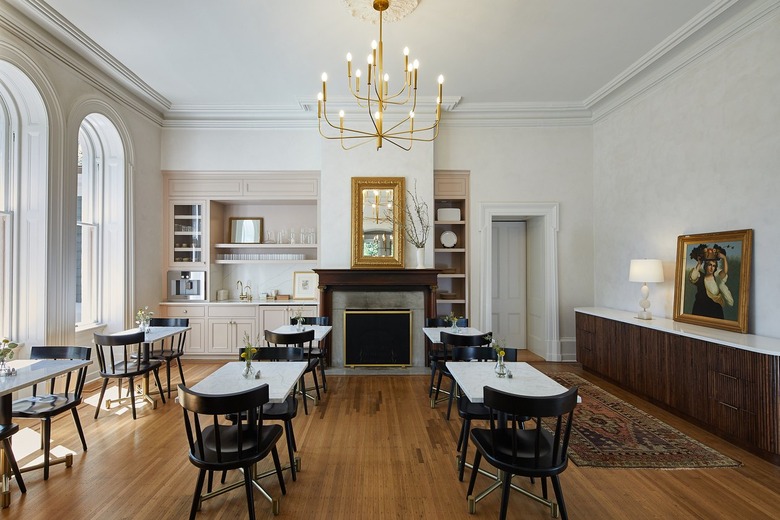Next Stop, This Italianate Mansion Hotel In Raleigh
Sarah and Jeff Shepard had walked by Montfort Hall, an Italianate-style mansion in Raleigh, North Carolina, daily for over a decade. The home, which was commissioned in 1858 by William Monfort Boylan and designed by British architect William Percival, is one of the few remaining houses from the era in Raleigh. "Our appreciation for historic buildings made us increasingly curious about it and what could be," says Jeff. That curiosity led them to transform the landmark building into Heights House, a small luxury hotel that opened last month.
Working with Maurer Architecture, Greg Paul Builders, and Bryan Costello Design, the couple restored the building to its original glory while adding modern design elements and amenities. The hotel is now home to nine guest rooms, ranging from a standard queen to the spacious honeymoon suite, which boasts two fireplaces and a clawfoot soaking tub. Rooms are outfitted with Frette linens, Brooklinen robes, and toiletries by Grown Alchemist.
Guests also get a taste of Raleigh during their stay. Breakfast, which is served in the dining room and on the front porch terraces, includes local Counter Culture coffee and pastries from Boulted Bread. A nightly turn-down service features Escazu Chocolates. "As avid travelers ourselves, we wanted to create something in Raleigh that didn't exist but we had experienced on our own travels," says Jeff.
We spoke to owner Jeff Shepard and designer Bryan Costello about renovating the 10,000-square foot property, preserving the history of the building and opening a hotel during COVID-19.
Hunker: I’ve been following the renovation on your Instagram — it looked like quite the challenge! What was the renovation process like?
Hunker: I've been following the renovation on your Instagram — it looked like quite the challenge! What was the renovation process like?
Jeff Shepherd: The renovation process was long! But we had amazing teams working together to bring our vision to life. We worked with local companies Greg Paul Builders and Maurer Architecture, both of whom have a great deal of experience with historic renovations. We had to bring all new plumbing, electrical, central heat and air conditioning ... and each room needed its own bathroom. There were definitely some strategic architectural decisions that had to be made to make all the things work!
Hunker: What was the inspiration for the design?
Hunker: What was the inspiration for the design?
Bryan Costello: The main point of inspiration for the interior design was the house itself. Built in the style of Italianate architecture, the house is full of powerful details: 15-foot ceilings, simple strong lines, larger-than-life curves, and charming niches. To honor the historic structure we chose furnishings and finishes with the same grand details and soft feelings: low elegant seating, arched brass lighting, and lime wash textured walls.
Hunker: How did you preserve the history of the building and incorporate period details into the design?
Hunker: How did you preserve the history of the building and incorporate period details into the design?
BC: Preserving the history of the building was all about restoring every original detail possible. We worked with some incredible teams to revitalize the windows, floors, plaster walls, and exterior details. We honored those historic details by selecting modern pieces that resonated with the shapes and textures of the existing structure, choosing new materials that would age gracefully and peppering in antique finds.
Hunker: What inspired the color scheme?
Hunker: What inspired the color scheme?
BC: The interior color scheme was a great way to connect the interior with the surrounding grounds. We chose earthy, muted tones of warm gray, moss green, sandstone pink, and natural gold.
Hunker: What are some of your favorite elements of the design?
Hunker: What are some of your favorite elements of the design?
BC: One of my favorite elements builds off of our color scheme. As you move through the hotel you'll find that the smaller the space, the darker the color (or in some cases the wilder the pattern). This is to create a gentle sense of compression and expansion — you're squeezed by the darker tones of smaller, cozy spaces and released into larger, brighter areas of the house.
Hunker: Where did you source the furnishings?
Hunker: Where did you source the furnishings?
BC: Our furnishings are sourced all over the world: elegant drawing room sofas from Italy; vintage pieces sourced from collectors in L.A., Philadelphia, New York City, and Atlanta; rugs from Turkey; and each bed in the Historic rooms was designed and handmade in North Carolina. It was a true hunt to find the best pieces for the house.
Hunker: How has COVID-19 impacted the opening of the Heights House? How do you think the pandemic will impact the hospitality industry going forward?
Hunker: How has COVID-19 impacted the opening of the Heights House? How do you think the pandemic will impact the hospitality industry going forward?
JS: We were very lucky as COVID-19 didn't impact us a great deal. It delayed some work or delivery of construction materials but nothing major. I think we are opening at a really good time — people are starting to be more comfortable with venturing out and traveling.
Hunker: What is most exciting to you about Raleigh as a destination for travelers?
Hunker: What is most exciting to you about Raleigh as a destination for travelers?
JS: Raleigh has SO much to offer! We like to think we aren't biased, but Raleigh — particularly downtown Raleigh — is so special. Although Heights House is nestled in a quiet historic neighborhood, we are a short walk from downtown Raleigh restaurants, museums and shops, Dix Park, and more. We hope that Heights House becomes a reason for visitors to come to Raleigh!
Interview has been edited and condensed for clarity.
